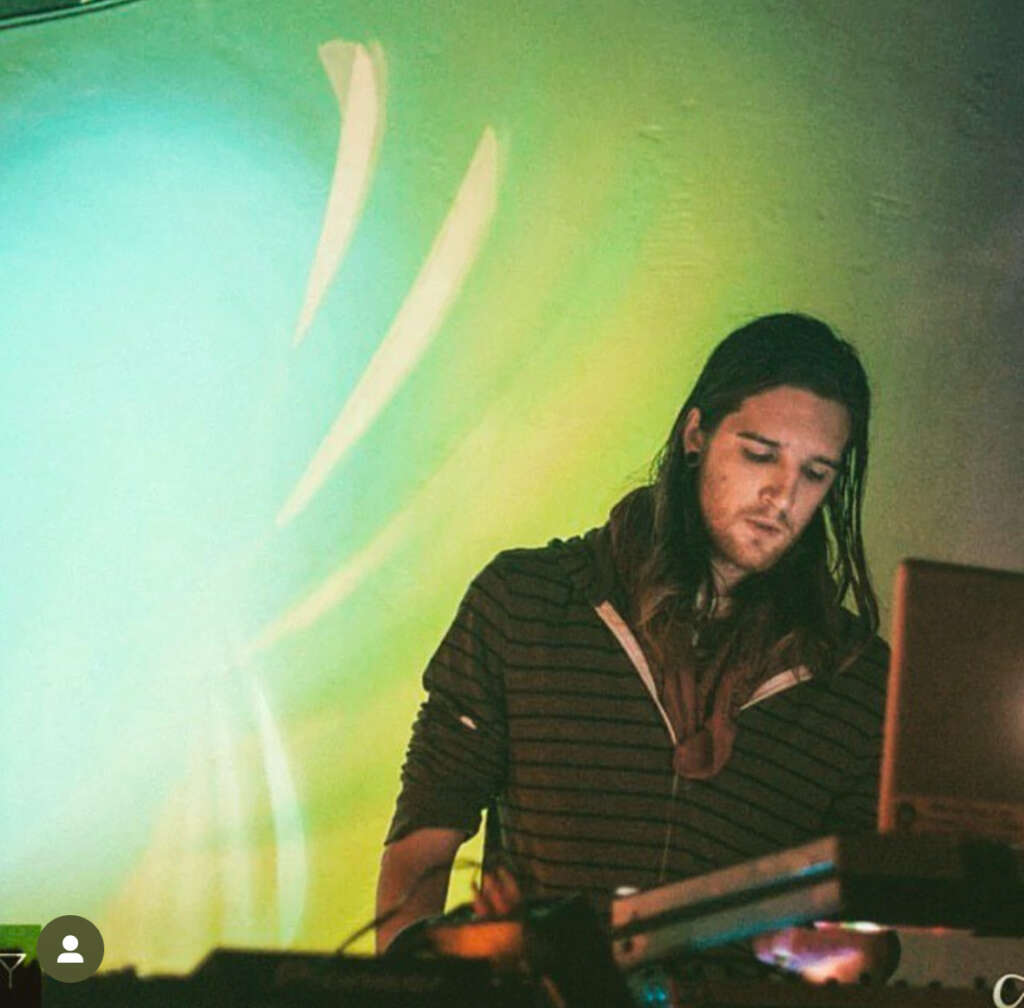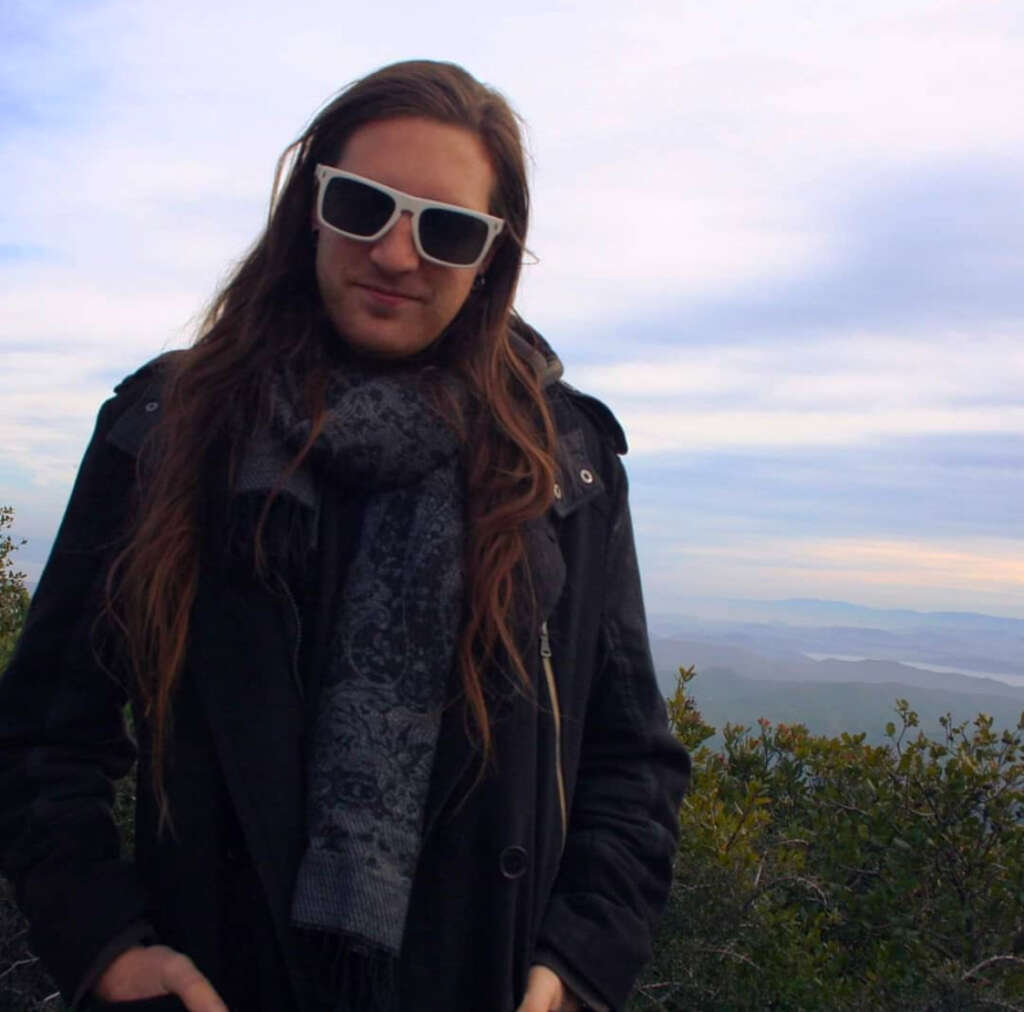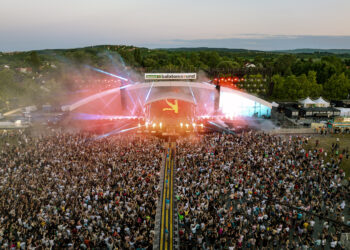In the ever-evolving landscape of electronic music, few artists embody the spirit of sonic exploration quite like Launchpad Infinity. Blending cutting-edge technology with a deep philosophical approach to music, this Bay Area-based artist is redefining the boundaries of musical experience. From his roots in jazz and rock to his current experiments in psychedelic bass music and virtual reality, Launchpad Infinity represents a unique fusion of creativity, innovation, and spiritual expression.
In this intimate interview, we dive deep into the artist’s creative process, his collaboration with PulseJet Studios, and his vision for music that transcends traditional genres. Discussing everything from AI and VR to the mystical influences behind his upcoming EP “Being of Unity,” Launchpad Infinity offers a profound glimpse into a musical journey that aims to launch listeners into new dimensions of consciousness.

Let’s start first with your name, Launchpad Infinity, your artist name suggests boundless sonic exploration. What’s the origin story behind your DJ name?
The name came to me one day while I was working and thinking about life and the universe. I like to leave the name up to people’s interpretation but essentially, the goal is to try and launch people into an experience of oneness with the universe by emulating different emotions with sound to take people on a journey into themselves.
As a San Francisco native, how has the city’s rich technological and musical heritage influenced your approach to creating electronic music? The Bay Area is known for both technological innovation and musical creativity – how do you blend these two worlds in your art?
I am not actually native to San Francisco, but Boston originally. Growing up in the Boston area and playing as the lead singer and guiarest in bands and studying Jazz Gutar in school and privately and playing in jazz bands, rooted my musical foundation in music theory and songwriting. I had been playing in bands and writing songs for 5 years before shifting over to electronic music production when I was 18, a good 15 years ago. I felt a magnetic pull to the Bay Area for a long time due to its rich musical and cultural history. Now calling it my home for the past 6 years I can sense my music taking on a more experimental tone. I swing back and forth between experimenting with sounds and writing songs that follow a more common formula or rhythmic pattern. I try and do my best to bridge the world between the familiar and unfamiliar. I generally try to do things differently with each track to bend the rules while still sounding pleasant. The music of the 60s coming from the Haight is a lifelong inspiration. I wrote a portion of the Depths of Perception album in an apartment on Haight two blocks from Ashbury, the first time I lived in the bay 11 years ago.
My music is created mostly with a computer and a blend of recorded sounds from the real world, instruments or synthesizers, and sometimes vocals. I use a lot of different software for creating and processing the sounds you hear in my music. When I first opened Ableton 15 years ago I realized all the doors were open as far as being able to create any sound and write songs with no limitations. I’ve learned how to use the major DAW’s and majored in audio production in college to learn how to use professional studios. I now have a studio in Oakland where I am always writing new songs and working on different projects with other people. I would not be able to make the kind of music I do without the new technology that exists today and I am thankful for it. I come from the background of playing in rock and jazz bands so if you listen long enough you may find hints of my early acoustic influence.

You recently created a music video using AI – can you walk us through that creative process? How does artificial intelligence interact with your artistic vision, and do you see it as a collaborative tool or a potential disruptor in music production?
I personally love that I get to live in the time of AI and see it as a tool like any other that can be used to create awesome works of art. Unfortunatly AI also has the potential to be used to cause harm to people such as taking away work from established and up and coming visual artists. Just like with any tool it’s about the intention of the person using it. I’ve been making my album covers for a while now and like having AI as an option in my workflow, but at the same time I am excited to be working with other visual artists like Visual Drip. I find it important to not only use the technology of today to expand my creative potential, but to work with other people, especially visual artists who have spent the same time honing their craft as I have mine with music. I’ve always considered myself a musical artist first so the fact that AI can make things move faster in content development or create full animations, makes my life easier and expands what I am able to make and get out to people. As far as in the music production world I see it as a tool like any other. From full blown AI written music to splicing any track into its individual instruments, AI is going to continue to be used. Just like when electronic music was new people will say it lacks emotion and humanity and its not real music but music is music. I dont intend to use AI with my production but I got nothing against those who do.
The intersection of technology and music seems central to your work, including your recent projects with PulseJet. How did you get involved with PulseJet and what sparked your interest in virtual reality?
Ian (Visual Drip) and I were working on the album cover and animations for my brand-new EP “Being of Unity” and talked about how cool it would be to make a VR space you could go to where you could be inside the animations. I’ve always loved the cutting-edge technology. My dad worked on computers when I was a child in the 90’s so I grew up playing games on the early computers. I always wanted the newest tech for holidays as a kid. As I grew up, I found myself using technology in most aspects of my life. People often say that electronic music lacks emotion, but I challenge that sentiment. There’s songs I’ve written entirely on a computer that I’ve poured my heart and soul into, that have helped me express complex emotions, the same way I used to write songs on the guitar and sing every day after school. I’ve also heard electronic music that made me cry.
I got involved with PulseJet when Ian reached out to me about an opportunity for us to turn our content into an AI music video. I like to think that thoughts become things and we made our intentions by talking about it, but Ian made it happen. It’s been a lot of fun working with the PulseJet team on this video and I’m excited to create more for future releases.

How do you see virtual reality and your work with PulseJet transforming the landscape of electronic music, especially in the Bass Music scene? Are there dimensions of musical experience that VR can unlock that traditional performances cannot?
My hope is that as more and more people are tuning into the VR landscape, we are able to provide quality content that really pulls people out of their time and place and transports them into this new world we create for them. Music and art already has the ability to take us to different feelings and emotions. When that is combined with VR and people can become immersed in the space too, then we, as artists, have the potential to really take people out of their bodies. That is exactly what I’m trying to do with my artist name, Launchpad Infinity, so finding Ian and John and the other guys at PulseJet has allowed me to take that vision to the next level.
With PulseJet Studios pushing the boundaries of musical experience through VR, how do you see the future of live and recorded music evolving? Are we moving towards more immersive, technology-driven musical encounters?
In my experience, technology is inherently creative. You wouldn’t have half the inventions we have today without experimentation. When you then use new technology with a creative lens you are able to push the boundaries of what is possible and do things no one has done or thought of before. My favorite artists are typically people that have pushed a boundary musically and made a sound or style that no one has before, or used technology in a new way that hasn’t been done before. There will always be people doing cutting edge things and there will always be people that are happy to fit inside of a specific genre box or musical style and there’s nothing wrong with that, but I personally like trying to push myself with each new song to make something new. I usually listen to boundary-pushing music, so I do see that wide range of things people are doing stylistically and sonically. I find that popularity is a bell curve with out of date and cutting-edge being on either side of what’s typically the most popular. What’s cutting-edge now will be popular later just as what’s popular now was cutting-edge when the last thing was popular. We are creating the content that doesn’t fit into any box of current musical and artistic standard, but may be the future musical and artistic standard.

If you could design the ultimate VR musical experience that represents the essence of Launchpad Infinity, what would it look like? Take us on a hypothetical journey through sound, technology, and imagination.
There is an infinite number of possible places we can take this. This video is the first project I am releasing with PulseJet and I hope we can continue to make even more experiences for people. The music is always meant to tell a story so the ideal experience would be one of transformation through the environments, maybe including interdimensional travel type visuals or alien worlds. I’ve heard my music called “space bass” before and it fits, because traveling the universe has always been a fantasy of mine. It would be cool to have a wide range of videos for my songs that tells a story, or different stories. Trying to expand people’s minds with visuals that match the music well, focusing on enlightenment and other aspects of the human experience. This could include the origins of life on the planet, traveling the cosmos, psychedelic visuals and ceremony music.
Your Facebook page description mentions “sonic supernovas of omni-genre” and “expanding horizons and minds”. How does your upcoming EP on December 6th represent this philosophical approach to music? What can listeners expect in terms of sonic journey and emotional landscape?
It has taken many years to be able to really push my musical boundaries to the place it is today. Writing music with little to no lyrics these past 15 years, I’ve had to change the way to continue to keep the music interesting and intentional. When I write new songs I try to find as many ways to break as many rules as I can while still sounding good. Freedom of expression comes when you remove the limitations we put on ourselves. This album is an ode to Sufi mysticism. The EP is called “Being of Unity,” which is a spin-off the ancient Sufi mystical text “Unity of Being.” The album cover art is of a Djinn so the title track became Djinn’s Wish, which I link to the genie from Aladdin, whose wish was for freedom. The songs I picked for this EP are ones that break down typical melodies and basslines into a psychedelic fusion of sounds, freeform self expression, which represents freedom for me.

You’re planning to release around 30 tracks soon – that’s an incredible volume of music. What drives this productive creative period? Are there specific technological or artistic breakthroughs that are fueling this burst of creativity?
I like to take my time with writing songs. Sometimes the ideas come quickly but then I work tirelessly on the mix-down and on the more intricate sound design. Sometimes I put a song down for a year and come back and have new ideas. I have to listen to a song so many times before I am satisfied with the outcome. For that reason, I always have a bunch of music I’m working on at once and typically slowly over months and years, groups of them get finished around the same time. Since moving to the Bay I haven’t been trying to play a bunch of shows like I used to in SoCal, so I could focus my energy in the studio. I’ve spent a few years in the studio and I am excited to start releasing all the music I’ve been fine-tuning.
Psychedelic bass music is often described as a genre that aims to create transformative experiences. How do you use technology – whether it’s VR, AI, or other innovations – to enhance the transcendent potential of your music?
I use technology in every step of my creative process, whether it’s recording instruments in the studio and then using audio manipulation to turn the sound into something unrecognizable, turning nobs on a synth, or using AI with After Effects for visuals, I love the potential the technology unlocks. While I will always have my roots in acoustic music, I believe using the technology of today will help me create the best music and experience I can for people. I strive to show people something new by creating a sound unique to my music to blow people’s minds and allow them a brief moment of freedom from the mundane, and remind them they are capable of the extraordinary.
Check out PulseJet on VisionPro
PulseJet on the App Store: https://apps.apple.com/us/app/pulsejet/id6504533651
PulseJet on Meta Quest: https://www.meta.com/en-gb/experiences/pulsejet/8962379510498367/








